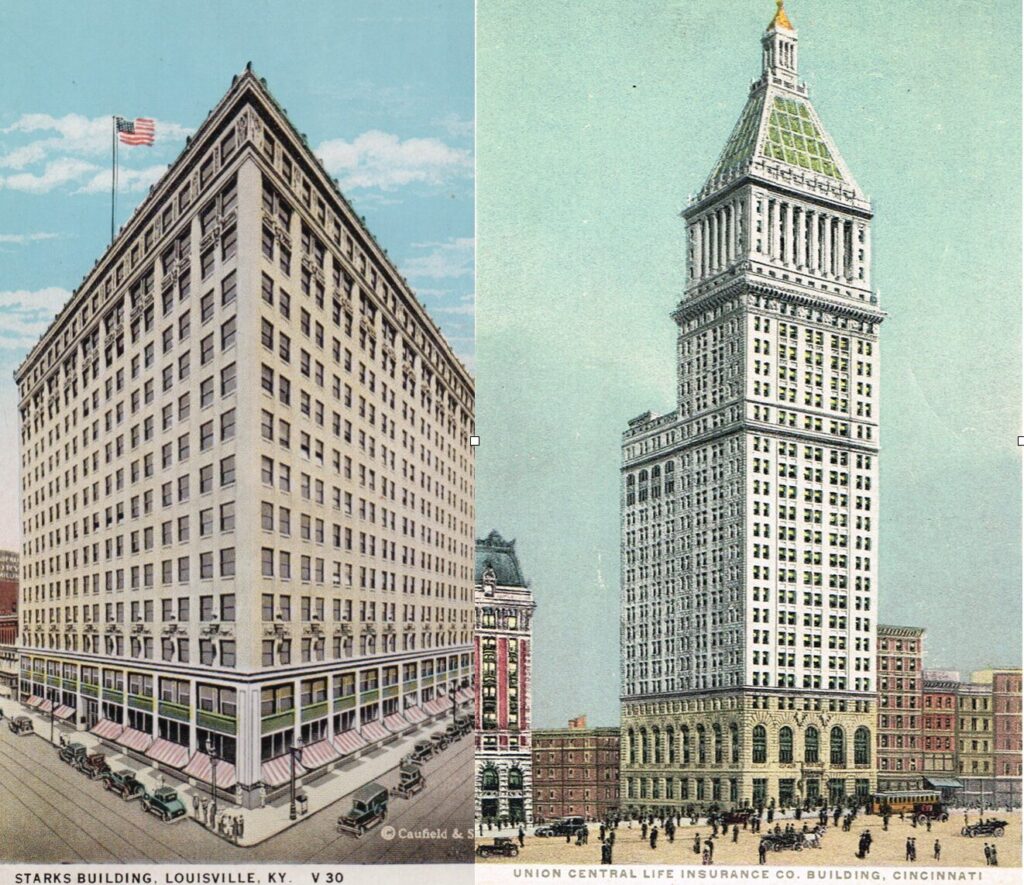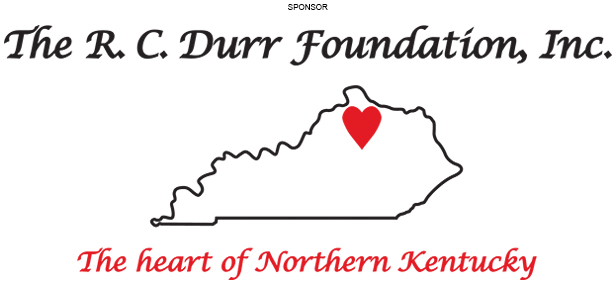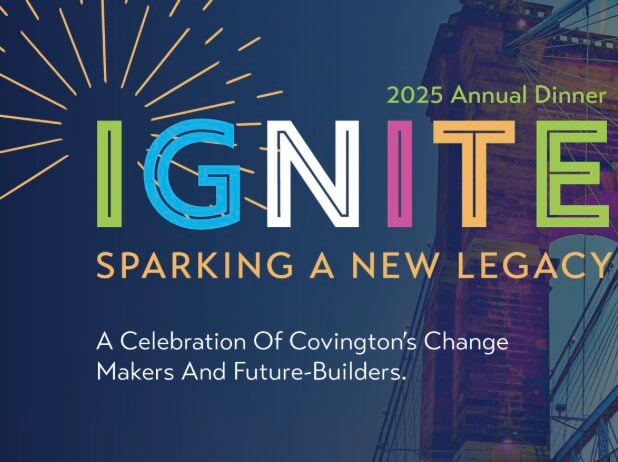By Paul A. Tenkotte, PhD
Special to NKyTribune
The early 1900s witnessed an intense competition among U.S. cities to build taller and taller skyscrapers. The Ingalls Building at Fourth and Walnut Streets in Cincinnati, Ohio, helped to pave the way, becoming the world’s “first reinforced-concrete skyscraper” when completed in 1903. A 16-story office structure, the Ingalls was beautifully renovated into a hotel in 2021, now home to Courtyard by Marriott. I remember the old office tower well, as my father worked for a CPA firm there in the 1960s, and I visited often.
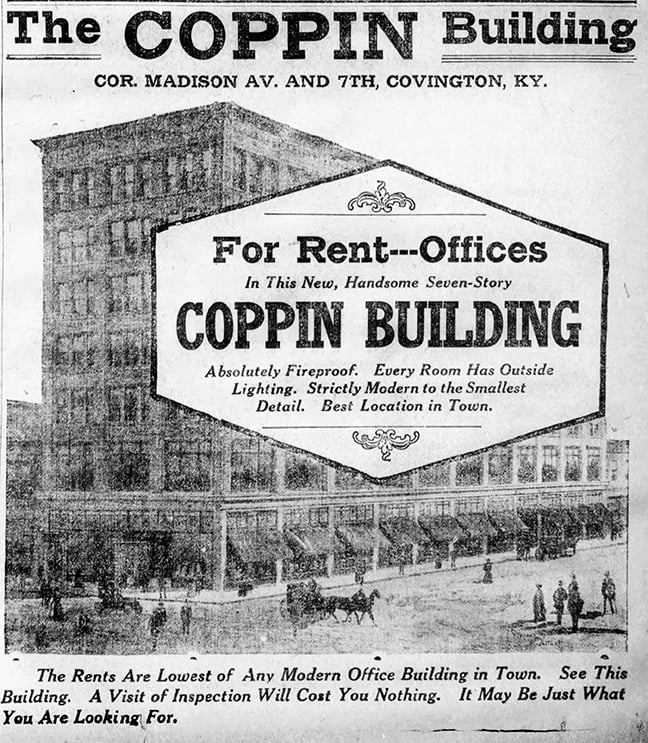
Across the Ohio River from Cincinnati, Covington claimed the “first reinforced-concrete skyscraper” in Kentucky, the 7-story 1910 Coppin’s Department Store at Seventh and Madison Avenues. Opened in March 1910, the department store occupied the first three floors, with offices on the upper floors. Like the Ingalls Building in Cincinnati, it now is a hotel. The Covington Hotel’s stunning restoration of the old department store and office building debuted in 2016.
Downriver from Cincinnati, residents of Louisville, Kentucky, awaited the construction of several skyscrapers in 1912–1913. Built in 1912 at Fifth and Jefferson Streets, the 18-story Inter-Southern Insurance Company Building was Kentucky’s tallest skyscraper at the time of its completion by late fall/early winter of 1912. It included an observation tower on its roof for the National Weather Bureau. In 1922 an 18-story addition was added to the Inter-Southern. In 2025 it sits vacant, awaiting redevelopment (“Weather Bureau Is Delayed in Moving,” “Courier-Journal,” January 3, 1913, p. 12).
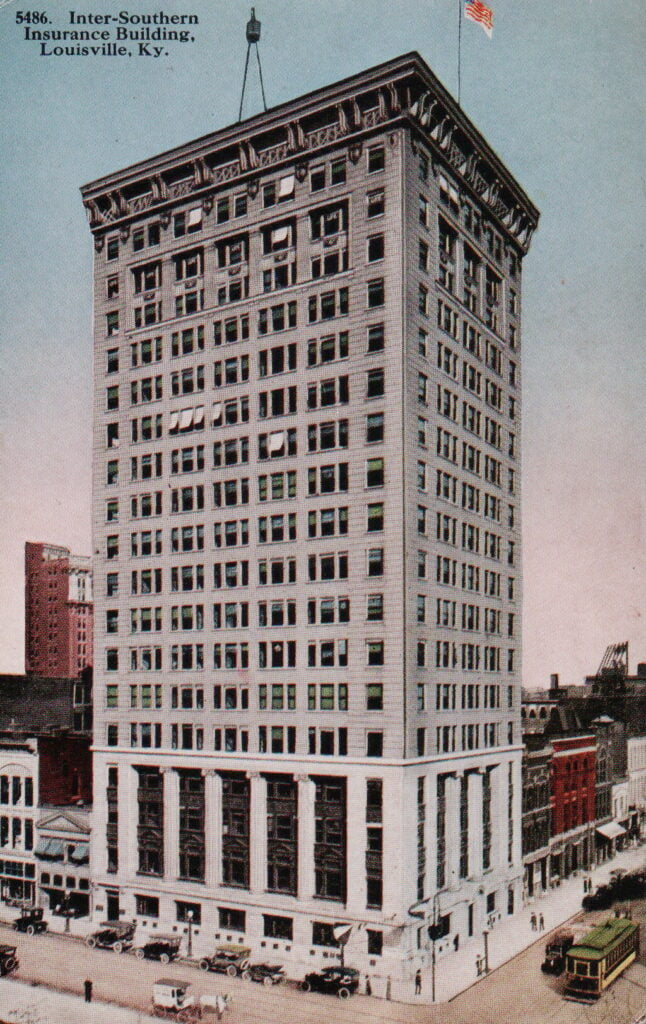
Not to be outdone by the Inter-Southern Insurance Company, the Southern National Life Insurance Company announced the construction of a 25-story skyscraper at Fourth and Market Streets in Louisville, claiming that it would become the tallest building in the South. However, the project was shelved when Inter-Southern Insurance acquired Southern National in July 1913 (“To Scrape Sky: Tallest Building in South assured for Louisville,” “Courier-Journal, June 20, 1912, p. 3; “Life Companies Merged at Directors’ Meeting,” “Courier-Journal,” July 15, 1913, p. 7).
At Fourth and Walnut Streets in Louisville, the 15-story Starks Building was completed in 1913. It was designed by the noted architectural firm of Daniel Burnham of Chicago, assisted by McDonald & Todd of Louisville. In 2025 the Starks Building also awaits redevelopment (“Bids Soon to be Taken for Work on Skyscraper: Starks Decides to Erect Fifteen-Story Building at Fourth and Walnut,” “Courier-Journal,” June 18, 1912, p. 12).
Lexington joined the skyscraper competition. In 1913 Fayette National Bank announced the construction of a new 15-story, 225-foot-tall headquarters. It became the tallest skyscraper in Lexington and the second-tallest in the state of Kentucky at that time. Designed by one of the nation’s leading architectural firms, McKim, Meade & White of New York City, it was also built by one of the largest construction firms in the United States — particularly of skyscrapers — the George A. Fuller Construction Company of New York City.
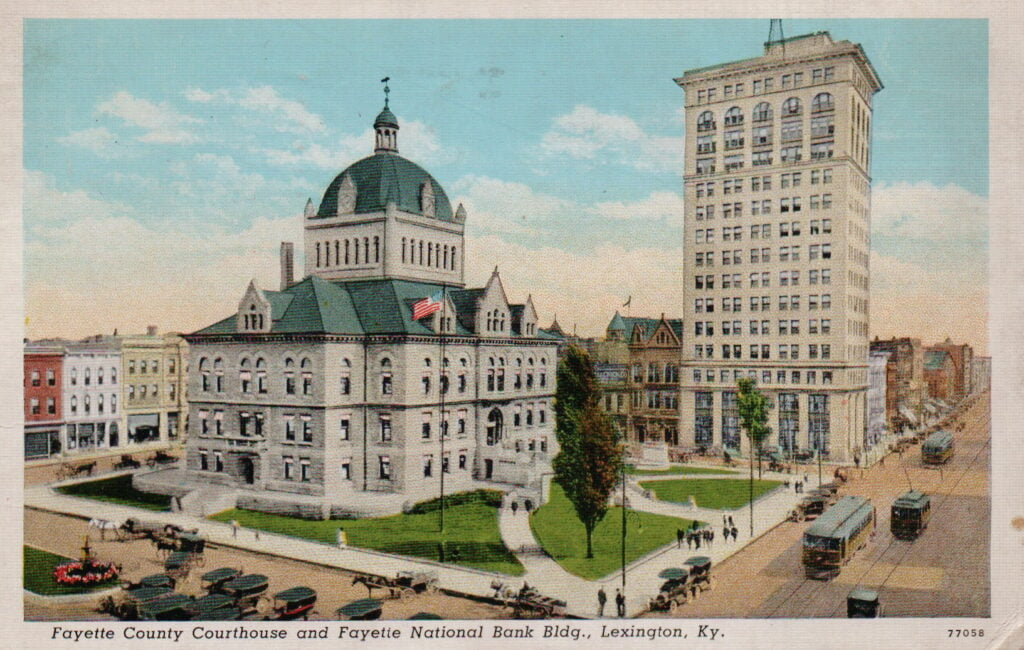
Steel construction workers from Philadelphia and other places joined the team, as Lexingtonians stood amazed at the workers scaling the tower in defiance of fear. In 2016 the building was restored and became the 21c Museum Hotel (“Fayette National Bank Building Is to Tower 225 Feet,” “Lexington Leader,” March 23, 1913, p. 1; “Steel Workers in Gymnastics,” “Lexington Leader,” May 27, 1913, p. 7).
However, the skyscraper sweepstakes in the Ohio River region was easily won by Cincinnatiin 1913. There, the 34-story Union Central Building towered “535 feet from the basement to the top of the lantern.” The “Lexington Leader” recognized the achievement, its headline reading “Giant Skyscraper in Cincinnati Is the Tallest Office Building West of Metropolis of New York.” Even St. Louis and Chicago did not yet claim a building of its height. In 2025 the building is being restored into apartments (“Giant Skyscraper in Cincinnati Is the Tallest Office Building West of Metropolis of New York,” “Lexington Leader,” September 18, 1913, p. 5).
The following year, 1914, would bring new challenges to the region and the nation as World War I erupted in Europe. However, the era of skyscraper construction would continue in the Ohio River region.
Paul A. Tenkotte, PhD is Editor of the “Our Rich History” weekly series and Professor of History at Northern Kentucky University (NKU). To browse ten years of past columns, see: https://nkytribune.com/category/living/our-rich-history/. Tenkotte also serves as Director of the ORVILLE Project (Ohio River Valley Innovation Library and Learning Engagement). For more information see https://orvillelearning.org/. He can be contacted at tenkottep@nku.edu.
